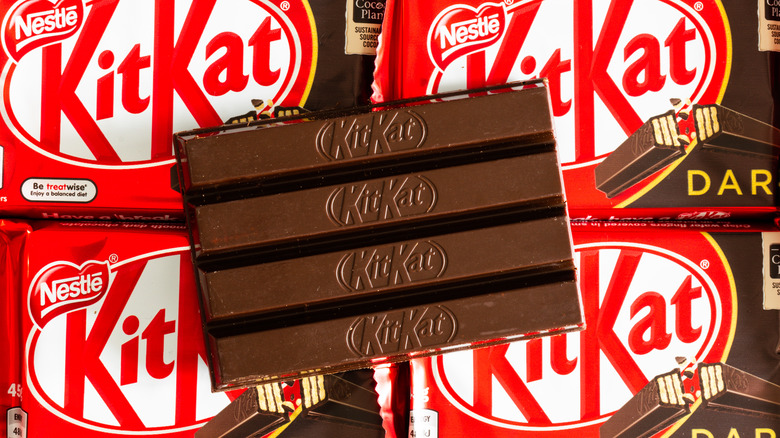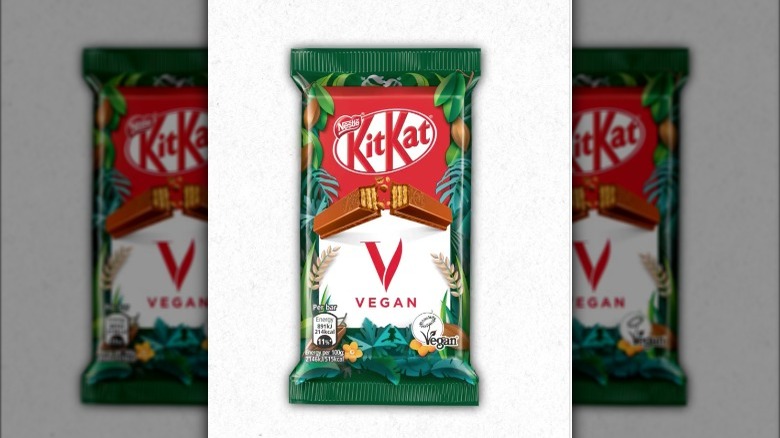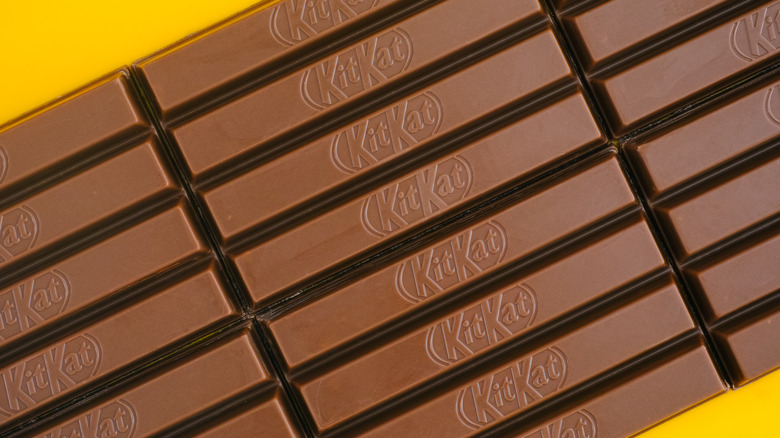After Success In The UK, Vegan KitKats Are Coming To 15 Countries
Vegans will tell you that being vegan is no trouble at all — unless they're craving the taste of something that they might have enjoyed before they gave up all animal products, that is. Given this, plus the fact that few people can say no to chocolate anyway, it's not surprising that the value of the vegan chocolate market is seen at $533 million today — and that figure is set to hit $1.4 billion in ten years' time, per Fortune.
But messing with a classic candy bar with a solid fan base can have its risks, as candymaker Nestlé may have already learned earlier this year, with the launch — and demise — of its MilkyBar Wowesomes, after just three years in the market. Per Food Dive, while consumers might be excited by the thought of enjoying healthier, lower sugar versions of their favorite products, the reality may not reflect this, and despite stellar reviews, the product was said to have suffered from weak sales.
KitKat V took two years to develop
This hasn't stopped Nestlé from trying again, which is why vegans around the world can rejoice that it is releasing the KitKat V, per Fortune, the non-dairy version of the beloved wafer-and-chocolate bar that is so popular it is an indispensable part of Japanese pop culture, per Bokksu.
The vegan version of the iconic KitKat bar isn't an exact dupe of its dairy-based sibling. A writer for the Daily Mail who taste tested the bar when it was first released in the UK said while KitKat V's wafer was almost identical to the one found in its dairy cousin, "the chocolate is less sweet and has a slightly more dull flavour than the real deal, which may be down to having less sugar at (14.2g per four fingers rather than 20.5g)." The writer adds that the bar is creamier and has a different texture, which may be down to how Nestlé decided to reinvent the iconic bar.
The head of Nestlé's Confectionery Product Technology Center, Louise Barrett, tells Bloomberg that the company experimented with different types of milk from oats to soy and almond before deciding on rice milk. "It's super challenging. Our R&D experts have worked to make it as close as possible," Barrett says. In all, the candy bar took two years to go from drawing board to execution.
KitKat V's are slightly more expensive
There is one downside — the new vegan bar is expected to cost slightly more, per Bloomberg, and that's because KitKat V uses more expensive ingredients, and its production lines demand more strict cleaning procedures.
Still, Nestlé is hoping vegans will overlook the price difference and give the candy their seals of approval. The candy will be produced at a factory in Hamburg, Germany, which will be making 300 tonnes of the chocolates, and has the capacity to make more.
In a press release, Nestlé said KitKat V would be available across 15 European countries, including France, Austria, Denmark, Sweden, Finland, Latvia, Lithuania, Estonia, Greece, Portugal, Poland, Hungary, and the Netherlands.
The company considers the product worth doing well because it offers plenty of potential if it works out. As Corinne Gabler, Nestlé's head of confectionery for Europe, said: "We have four in 10 consumers saying they are interested to move to a more plant-based diet. It could be a significant market in the confectionery area," per Fortune.


